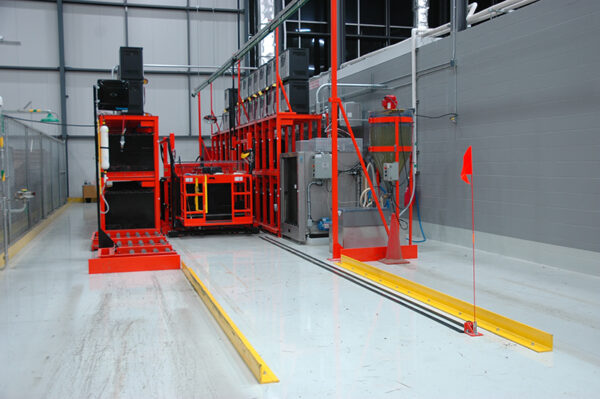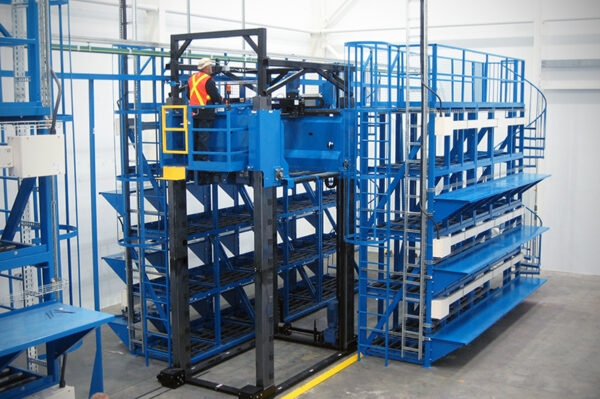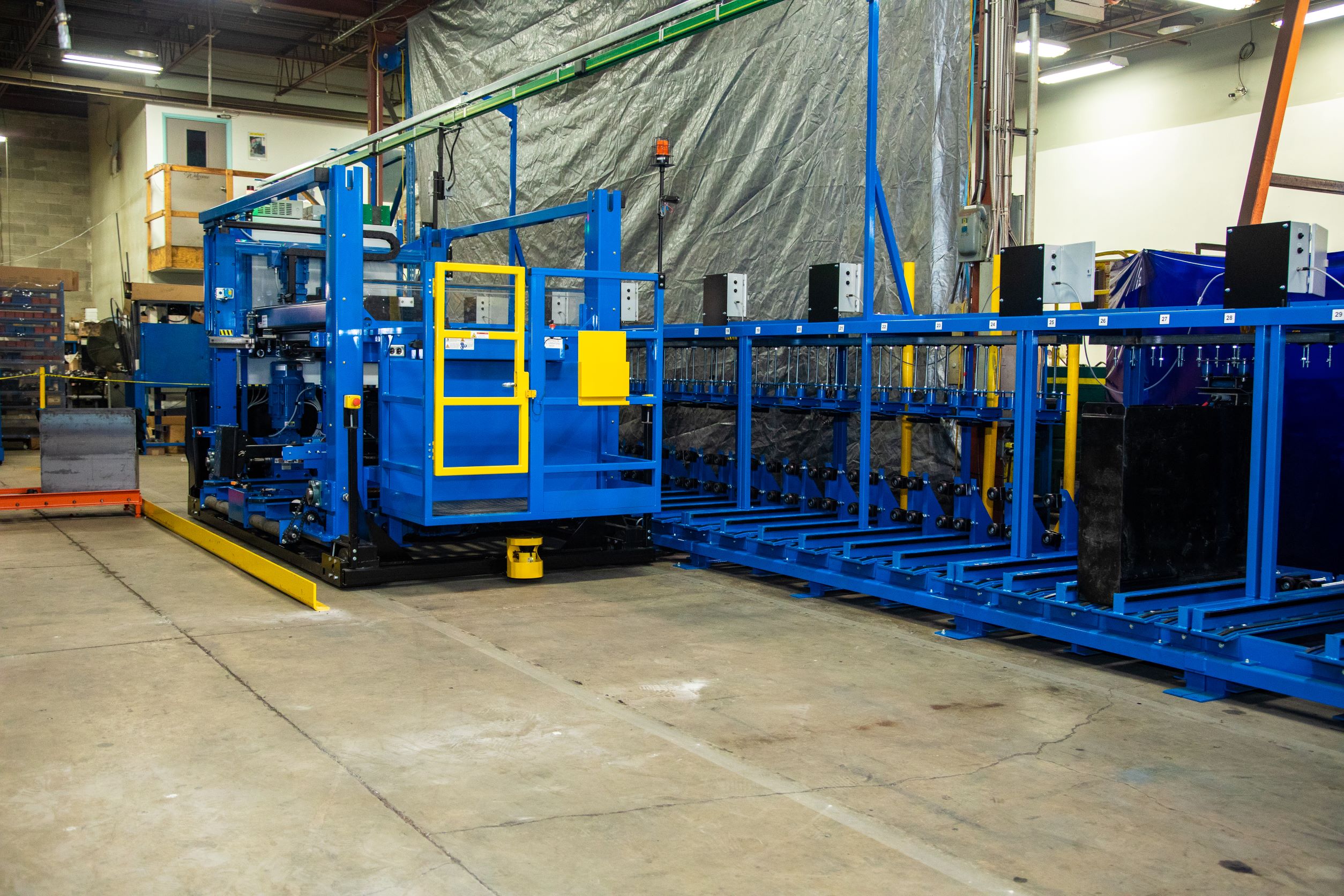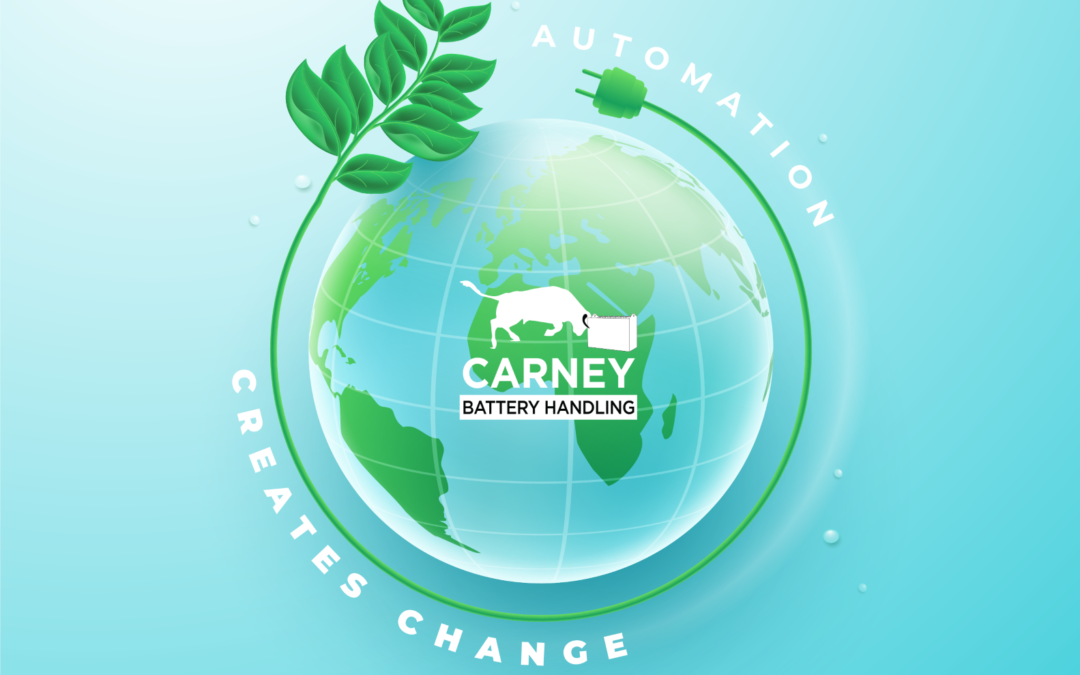Many manufacturers are changing their approach to equipment and energy use. They are adopting alternative processes to reduce their carbon footprint and fulfill their corporate social responsibility. New products are emerging that diminish mundane inefficiencies through customized automation processes.
Providing new value to customers and helping the industry evolve is only part of our responsibility as product innovators. New products need to improve society beyond immediate satisfaction. The innovation of the Carney Battery Bull does just that, having had many incremental improvements over each previous version with new environmentally-friendly features added with each evolvement.
The Battery Bull Hydraulic (BBH), developed in 2001, was our first step in our development program of man-aboard battery transfer carts. The BBH improved the efficiency of battery changing for fleets of over 30 batteries. Outfitted with several features to simplify battery changing, it revolutionized traditional battery handling. This includes laser alignment, integrated safety functions, 25% faster changes thanks to powered lead rollers, and dual-sided electromagnetic extraction.

In August of 2008, the traditional BBH was transformed into an all-electric variant named the Battery Bull Electric or BBE. The BBE, which is available in single-level through to 6 high multi-level racking systems has the ability to work with battery fleets from <50 batteries to over 300 batteries, consuming 12% less energy than its predecessor and requiring substantially less maintenance due to the elimination of hydraulics.

The Fully Automated Battery Bull Electric or BBE-FA was introduced in 2018, another system improvement that meant that the battery changer was now entirely stand-alone. Requiring no operator and equipped with detailed self-diagnostics, the BBE-FA has the functionality to log and schedule tasks, maintenance, and battery changes. This process evolution also meant fewer man-hours and workplace mishaps because automation leaves no room for human error and diminished the percentage of day-to-day asset damage.

The differences in service requirements for each tier of battery room automation are substantial. Hydraulics require considerably more maintenance than that of their electric counterpart (30%) which costs more to maintain when considering part replacements, oil leaks, and oil changes. Full automation, although more costly upfront, has a longer lifespan, is more energy-efficient, and is COVID-19 friendly because service and software updates can be provided remotely. These factors provide an attractive Return on Investment (ROI).
The fact of the matter is automation is the gateway to a cleaner planet. Preventing pollution and emissions by optimizing manufacturing processes is a force that can change how the industry impacts the environment. Embracing new technologies like automation and replacing older, costly technologies not only benefits business owners through cost efficiencies, but it benefits the planet. Some of these advantages include lower operating costs, improving workplace safety, reducing factory lead times, increasing production output, and minimizing your battery room footprint.
For far too long, we have used fossil fuels to power our businesses, contributing to land degradation, water pollution, emissions, and ocean acidification by association. Even now, an average of 80% of our energy consumption is sustained by fossil fuels – a statistic that is much too high. Other forms of energy are already available and contribute more to our power utilization than ever before. As leaders of the industry and in conjunction with the 50th Earth Day theme “Restore Our Earth”, take a moment to consider automating your battery room. After all, we only have one planet, and it is due time we consider it as part of our business decisions. Something as small as automating your battery room creates ripples of change.

